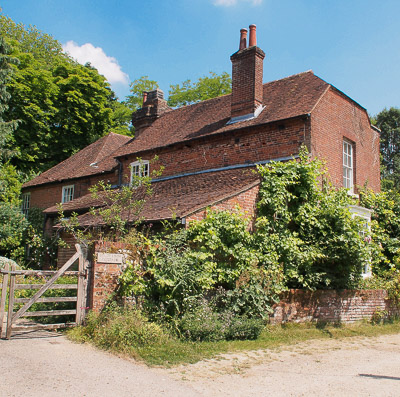Footprints From The Past… Place Lane
Footprints From The Past… Place Lane
Table of Contents
Footpaths 23 &25

Compton crossroads to Compton Lock
How often have you walked down Place Lane to Compton Lock and thought of who has been this way before? This is an ancient route, probably pre- Roman, but an important one for the Compton community.
It could have been an offshoot from the Celtic Ridge Way at High Cross coming down footpath 35 through Compton Street, crossing the river valley where Compton Lock is now situated. At this point it is likely that Compton Mill once stood, dating back pre 1300.
The name “place” could have derived from the Anglo-Saxon “plaesce” meaning marshy or possibly, enclosed.(C.Corcoran 2015 “The Five Mills of Twyford”).
The route was altered slightly where the motorway crosses and previously the A33 before regaining its direction underneath the railway.

On the first part of the Lane sits Compton Manor(Farm) House with Goldfinch Cottage. The House may predate 1362, but the fascia is from the Queen Anne period, early 18th century.
Both Drew(1939) and Whitaker(1985) quote a wonderful story about this house and the Goldfinch family, who lived here between 1596 and 1868. In 1645, during the Civil War, Captain Barnard (remembered at the Inn on the Otterbourne Road, no longer in existence.) was in command of a company of Roundheads billeted at the House, prior to advancing on Winchester. He found his men on the point of eating a feast prepared by the Goldfinches in honour of the birth of their son. He intervened to prevent this outrage, and in return asked that the boy be christened “Barnard”. This duly happened, and 75 years later, Barnard Goldfinch was buried at All Saints Compton.
When you follow Place Lane under the railway bridge you are on the drive to Compton Place. This is on the left hand side and is “place of antiquity”, a scheduled monument under the Ancient Monuments and Archaeological Area Act of 1979.
As a moated site, it survives as an area of low earth works surrounded by a moat. It dates back to the Norman period(1250-1350) when such sites were a status symbol. Here there was probably an early manor house with chapel, inhabited by the Wascelyn, Thorncombe and Wodeloke families in turn. The village was once called Compton-Wascelyn.
From 1455, a Tudor Manor House stood here, occupied by the staunchly Catholic, Philpott family.
However, one of their sons, John Philpott, became an Anglican priest and archdeacon of Winchester. In 1555, in the reign of Catholic Queen Mary, he refused to recant his beliefs and was burnt at the stake in London. He is dramatically honoured by a golden circle of flame around his head in a fine family-tree of 1620.
The House was demolished in 1700 and the only, highly significant, evidence above ground is the 16th century brick and flint wall and gate alongside the footpath. There are plans to stabilise the wall, remove vegetation for expert examination and appropriate renovation. Funds will be needed for this work.
John Wilkinson.OBE.
Footpaths & Environment Representative C&SPC.
References: See the Parish History page for details of the Drew and Whitaker references.
This article appeared in the August 2015 issue of the Compton & Shawford Parish Magazine.
